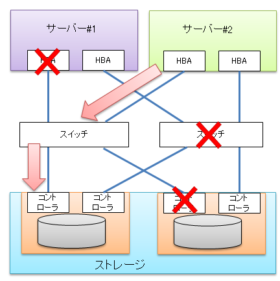
The following command comes from a server with multipathing enabled using the multipathd daemon, and from its output you can check the Lun information identified by the OS. Redhat’s default multipathing service is the multipathd daemon. 3 Connect the scsi disk sdd to scsi2, channel 0, id 1, lun 2 2) Use multipath command #Dmesg | grep -i “attached” scsi disk has been attached to scsi0, channel 0, id 0, lun 0 sda has scsi disk attached to scsi2, channel 0, id 0, lun 2 and sdb is attached to scsi2, channel 0, Id 0, lun has scsi disk sdc attached. You can also check the following paths for lun information. You can use the iscsiadm (only when using iscsi target storage) command to get information about additional luns. Here is another example of using the same file from different storage vendors.Ĭonnected Device: Host: scsi0 Channel: 00 ID: 00 Rounds: 00 Vendor: HP 36.4G Model: MAN3367MC Revision: HP05 Type: Direct-Access ANSI SCSI Revision: 02 Host: scsi2 Channel: 00 ID: 00 Number of rounds: 00 Vendor: COMPAQ Model: HSV110 (C) COMPAQ Revision: 2003 Type: Unknown ANSI SCSI Version: 02 Host: scsi2 Channel: 00 Id: 00 Lun: 02 Vendor: COMPAQ Model: HSV110 (C) COMPAQ Revision: 2003 Type: Direct Access ANSI SCSI Revision: 02 Host: scsi2 Channel: 00 Id: 00 Lun: 03 Vendor: COMPAQ Model: HSV110 (C) COMPAQ Revision: 2003 Type: Direct-Access ANSI SCSI Revision : 02 host: scsi2 channel: 00 Id: 01 lun: 00 vendor: COMPAQ model: HSV110 (C) COMPAQ version: 2003 type: unknown ANSI SCSI version: 02 host: scsi2 channel: 00 ID: 01 number: 02 vendor : COMPAQ Model: HSV110 (C) COMPAQ Version: 2003 Type: Direct-Access ANSI SCSI Revision: 02 Host: scsi2 Channel: 00 ID: 01 Lun: 03 Vendor: COMPAQ Model: HSV110 (C) COMPAQ Rev: 2003

Usually Lens will show up as Host: scsi3 Channel: 00 Id: 00 Lun: 00 Vendor: LIO-ORG Model: rhelblock Rev: 4.0 Type: Direct-Access ANSI SCSI revision: 05 Vendor: NECVMWar Model: VMware IDE CDR10 Rev: 1.00 Type: Direct-Access ANSI SCSI revision: 02

Vendor: VMware, Model: VMware Virtual S Rev: 1.0


 0 kommentar(er)
0 kommentar(er)
